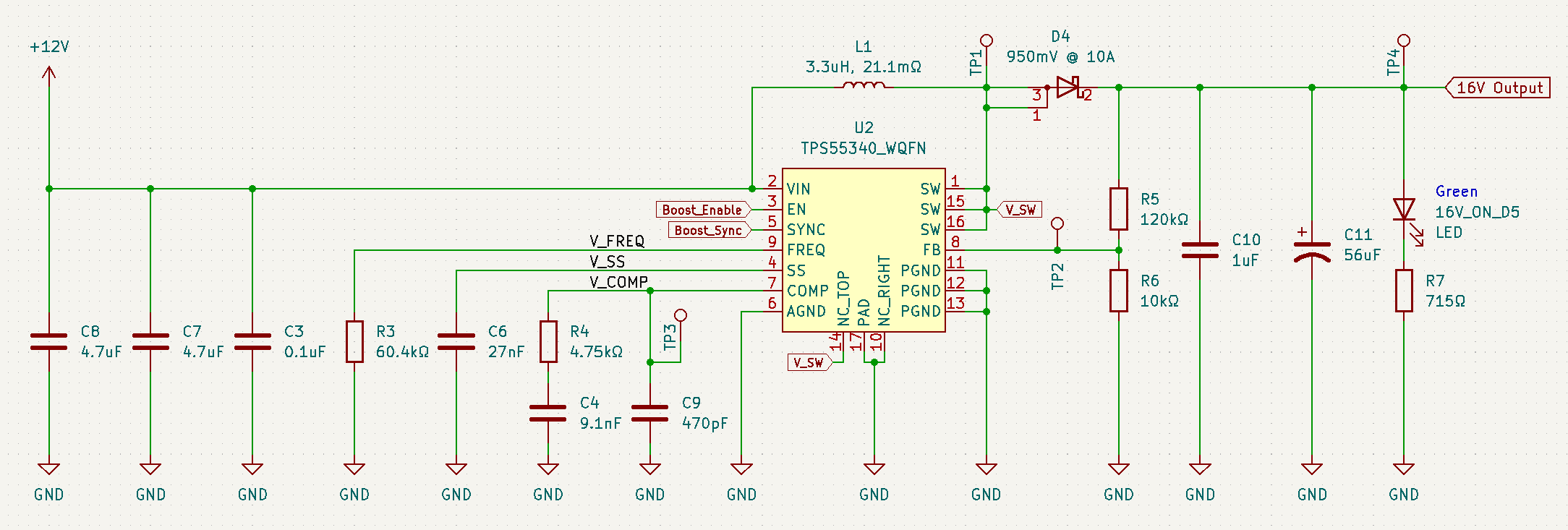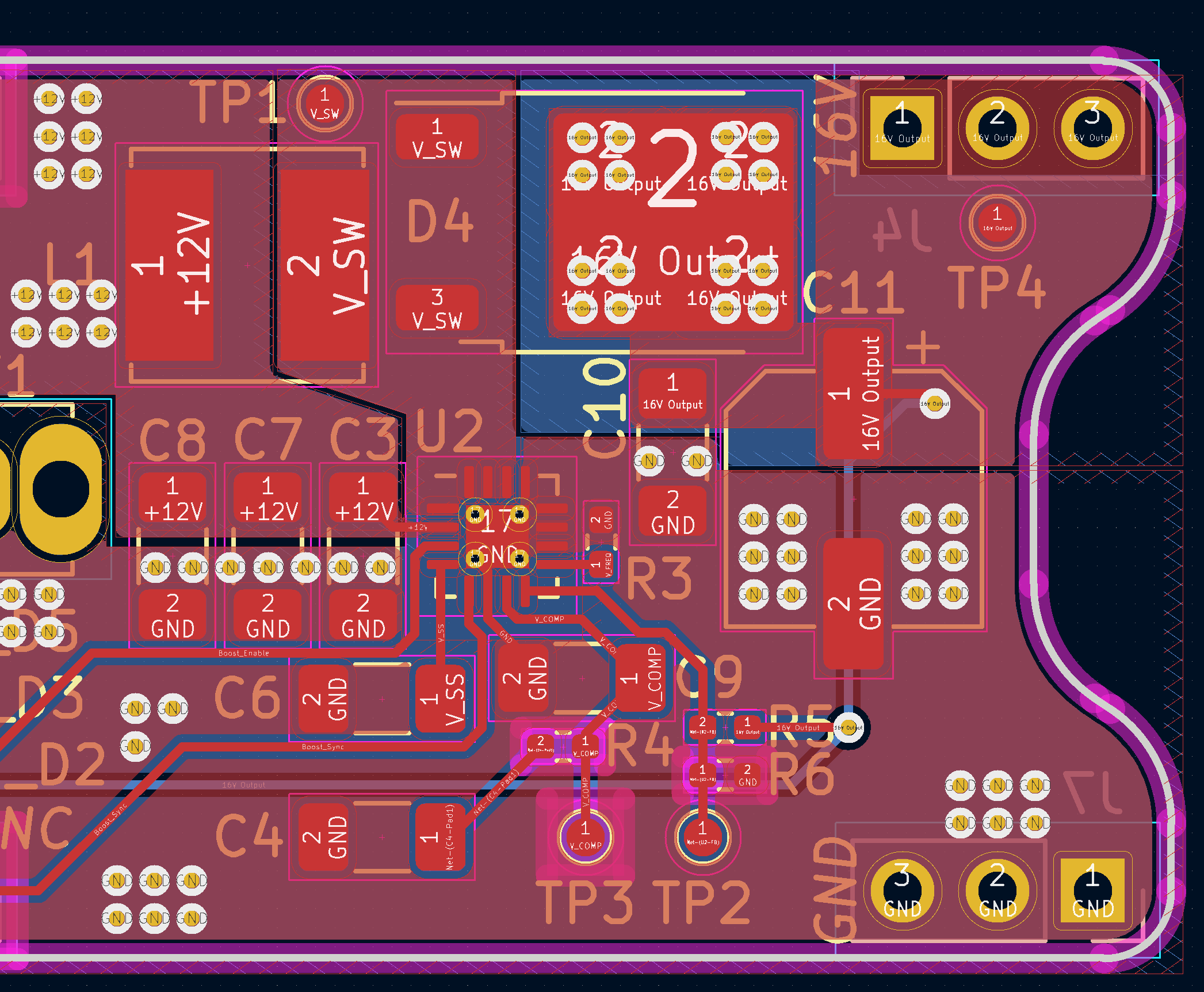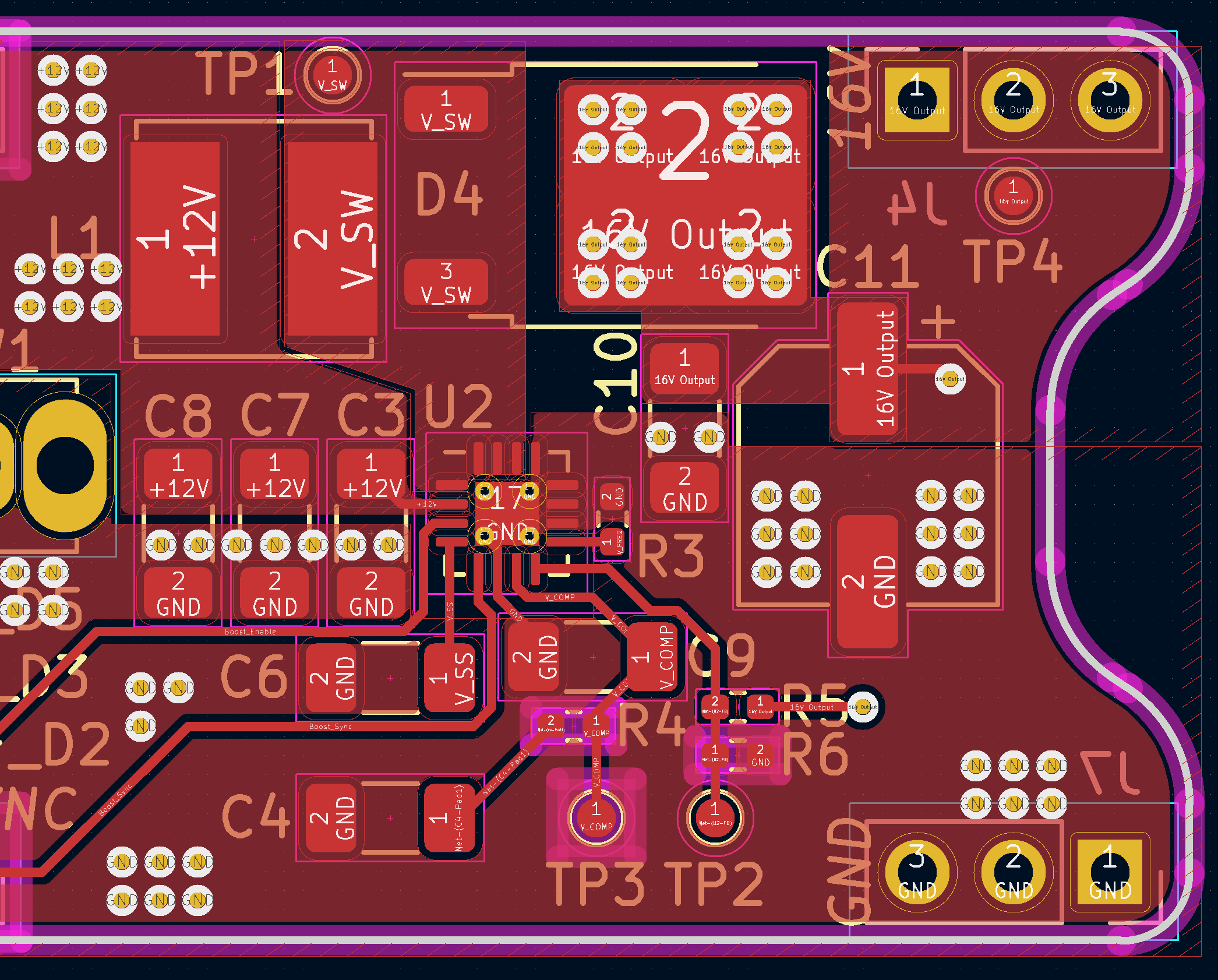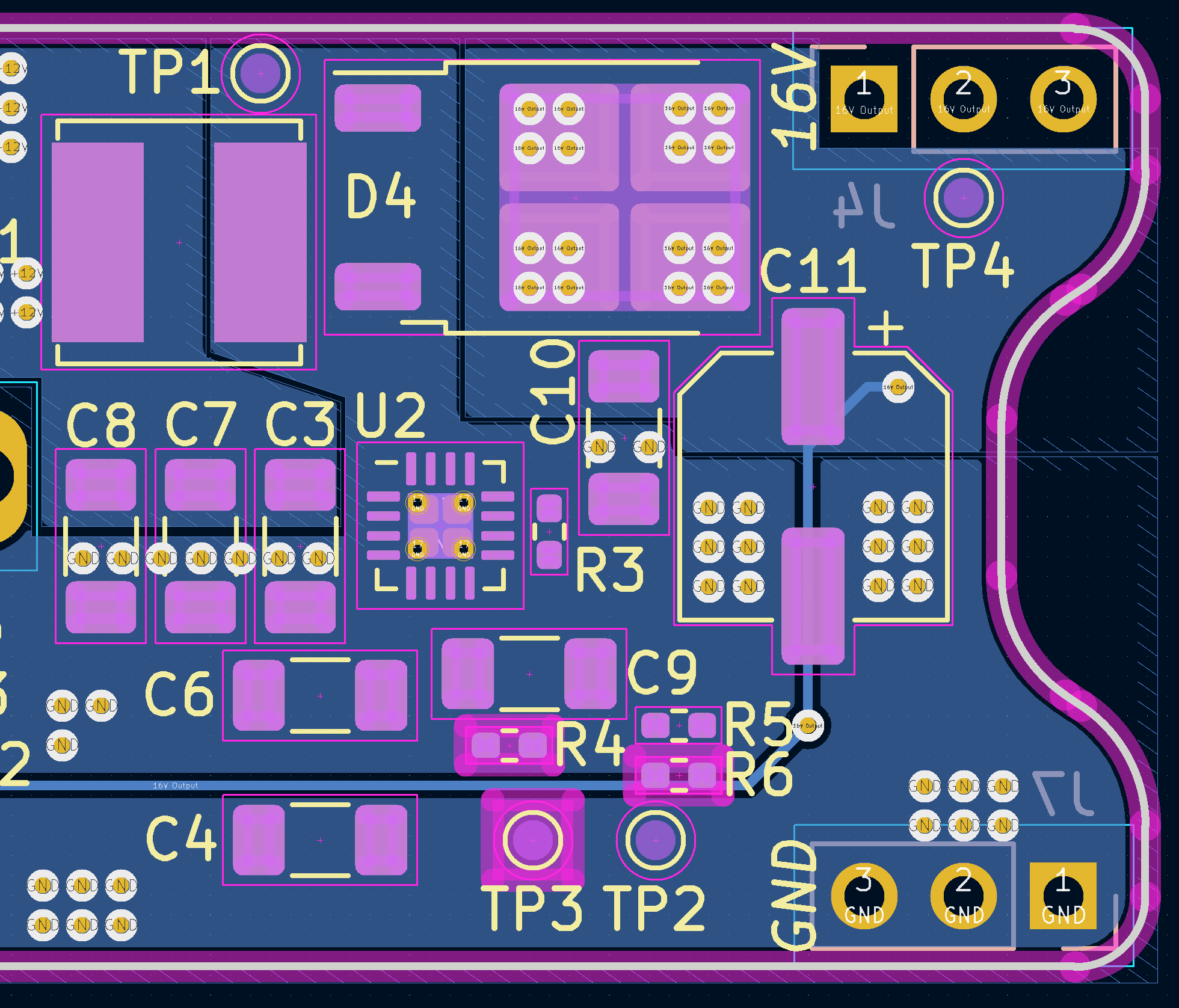I'm trying to implement a boost converter using TI's TPS55340.
After spinning up the design, I have found that the output ripple is almost 8x what I expected to see given my design parameters. First, let's get into the design, schematic and layout.
In short, my design parameters:
- Input voltage: 11-13 V
- Output Voltage: 16 V @ ~3 A (WEBENCH set to 2.91 A)
Plugging this into WEBENCH resulted in the following implementation (link to HTML):

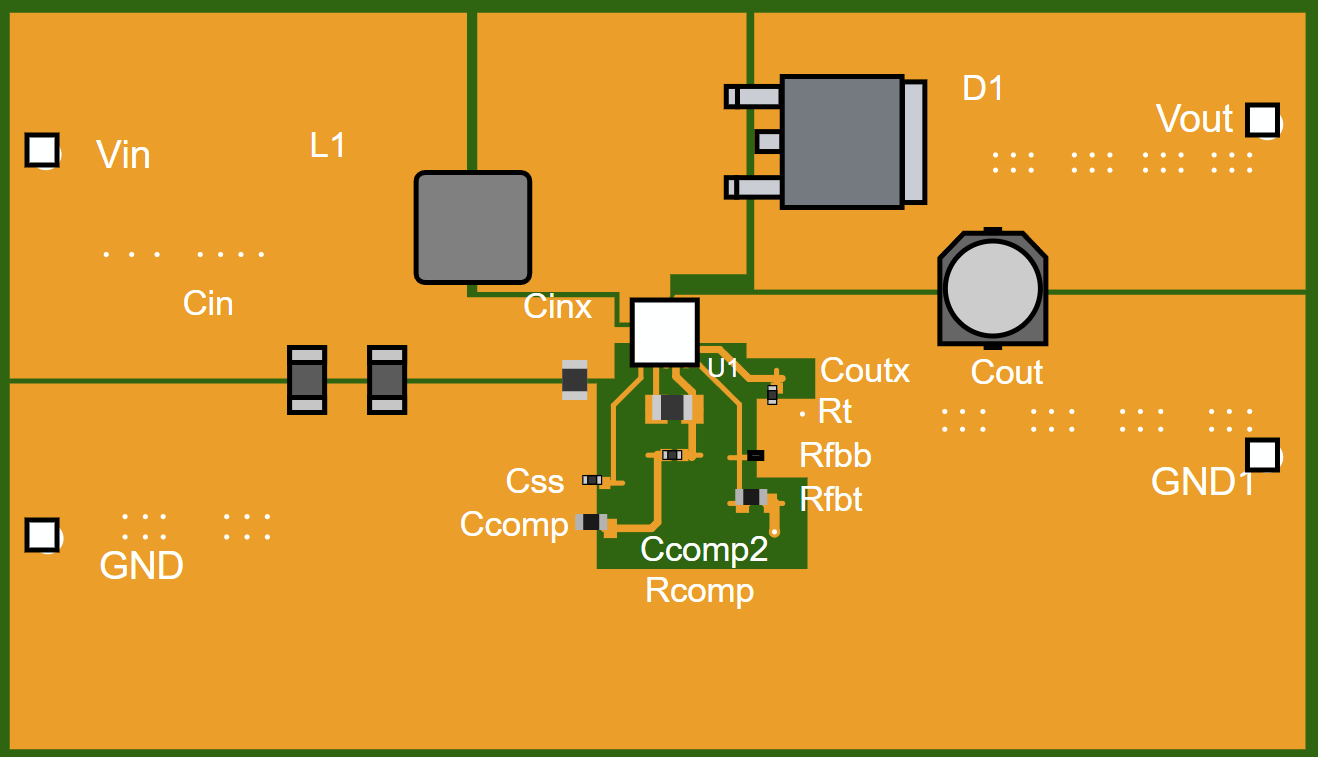
I translated this into KiCAD as follows:
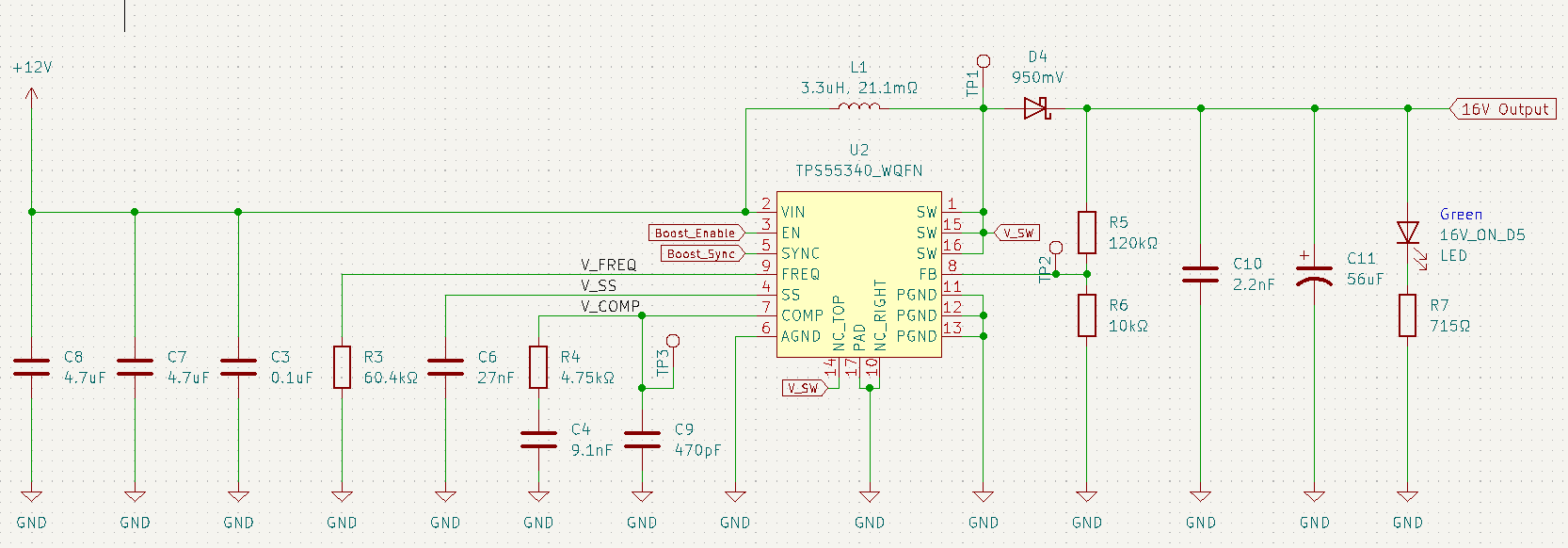
And here's the region of my PCB where the boost converter is realized:
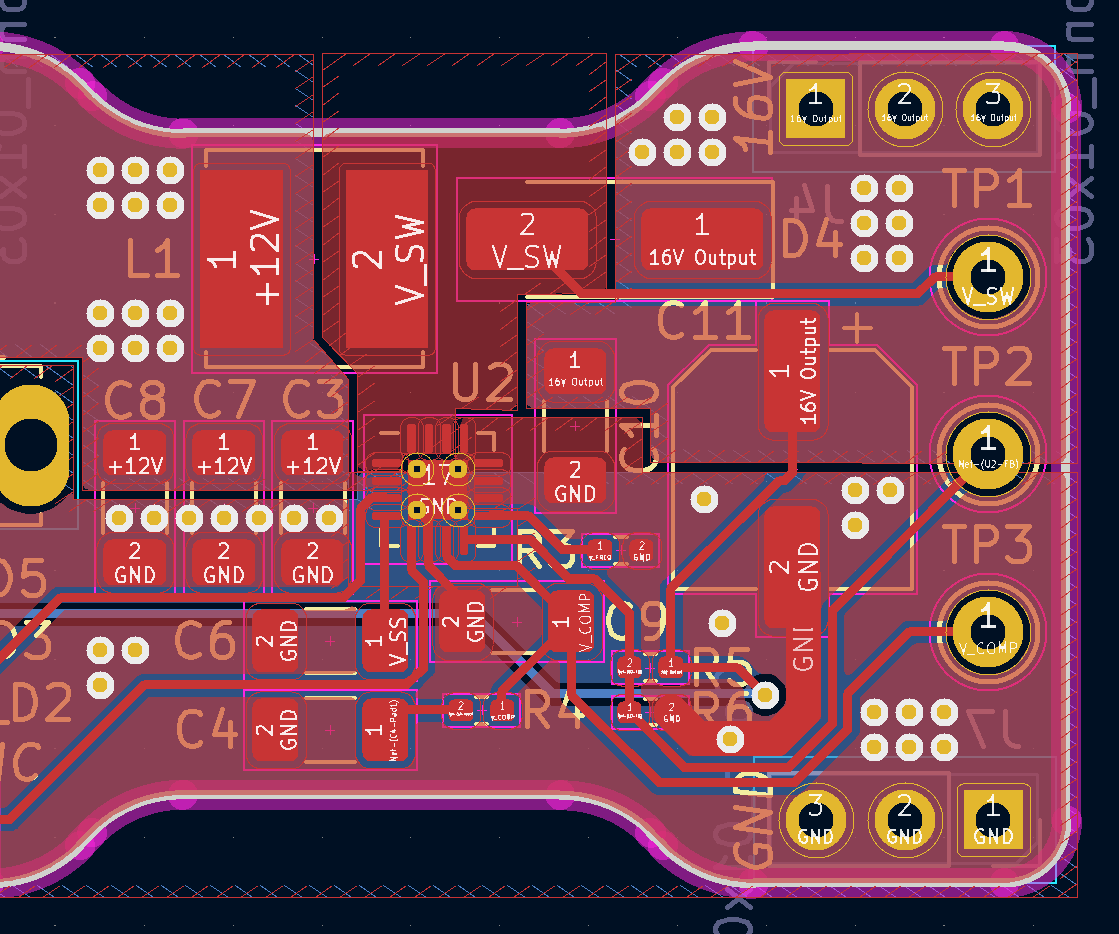
The input 12 V is input to the board less than 3 cm away via a DC barrel jack.
There is a mistake in the layout, I should not have sliced through the 16 V output plane with the V_SW test point, but I have fixed this with a few bodge wires. Here is a photo of the assembled region of the circuit:
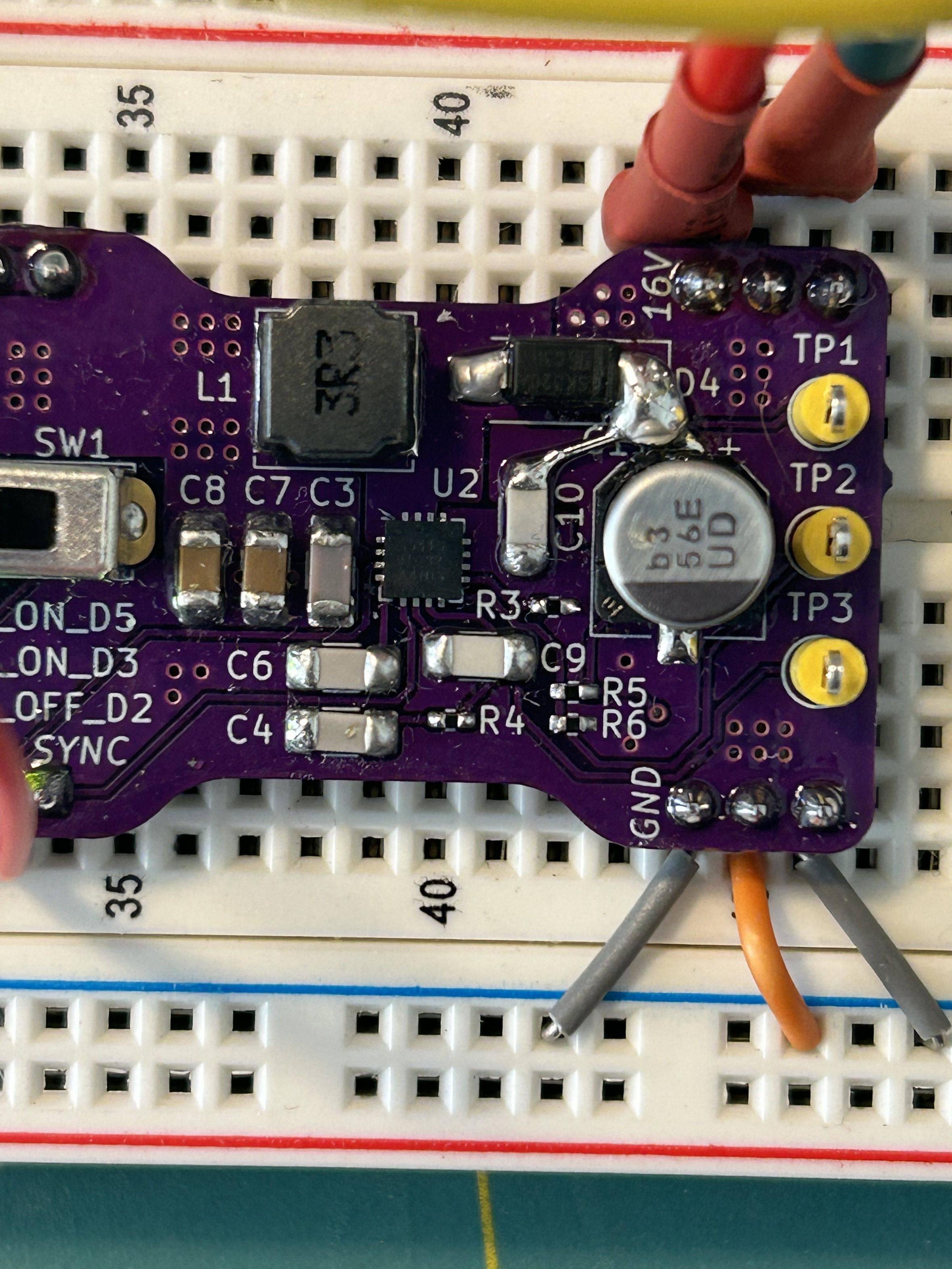
You'll likely be interested in the critical components to implement the boost converter:
Using my benchtop power supply set to 12 V, and my DC load configured to draw 0.1 A, 0.5 A and 1 A, I measured the output using my oscilloscope and took screenshots. In each figure the 12 V input is the blue trace and the output is the yellow. Both channels are in AC coupling mode, and neither probe is using the ground alligator clip -- both are using the ring-tip ground spring.
0.1 A:
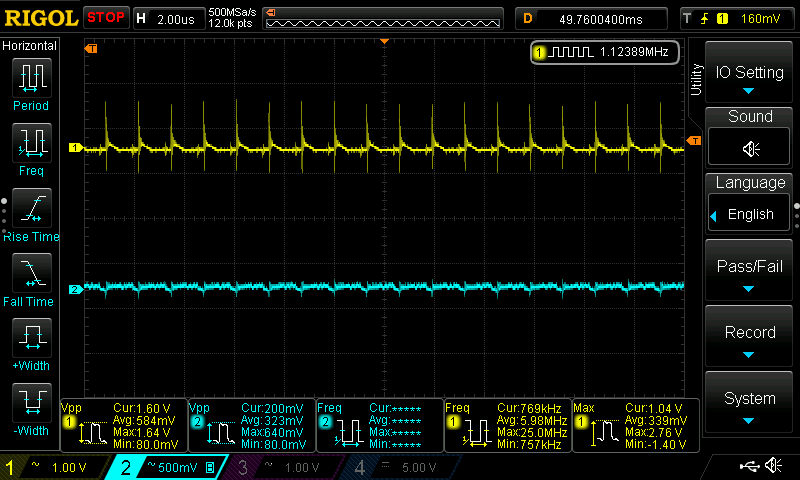
0.5 A:

1 A:
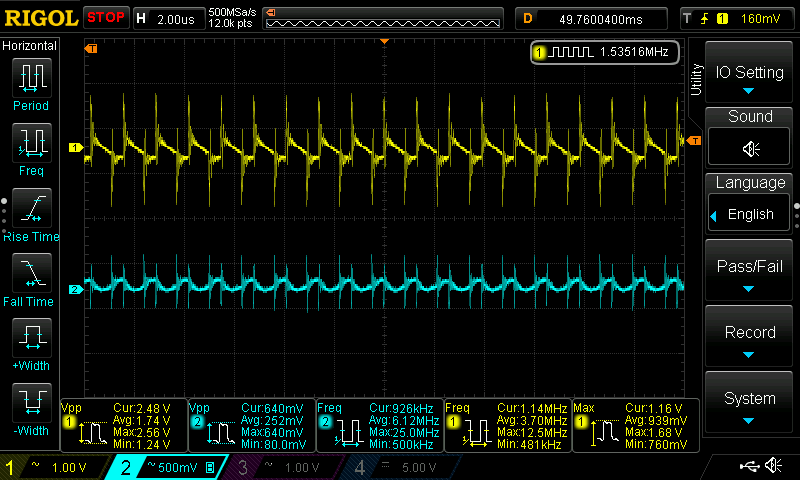
The Vpp of the output being all the way up near 3 V is way out of spec for the design, according to the WEBENCH model it should be less than 57.5 mV.
I think the problem stems from a weak output diode. I notice that the part gets pretty hot during operation. What do you think?
If there is anything missing you'd like to see from the design, let me know.
Edit! Feedback has been incorporated:
The replacement parts have arrived and I've installed them on the PCB.
C11 is again 56uF but now has a much lower ESR. It's PN is 25SVPF56M.
C10 is now 1uF (up from 2.2nF). It's PN is
C1206C105K3RAC7800.
Here are the results. Same setup as last time, input power set to 12V, DC electronic load providing the load. This time we're only probing the output of the circuit.
0.1A:
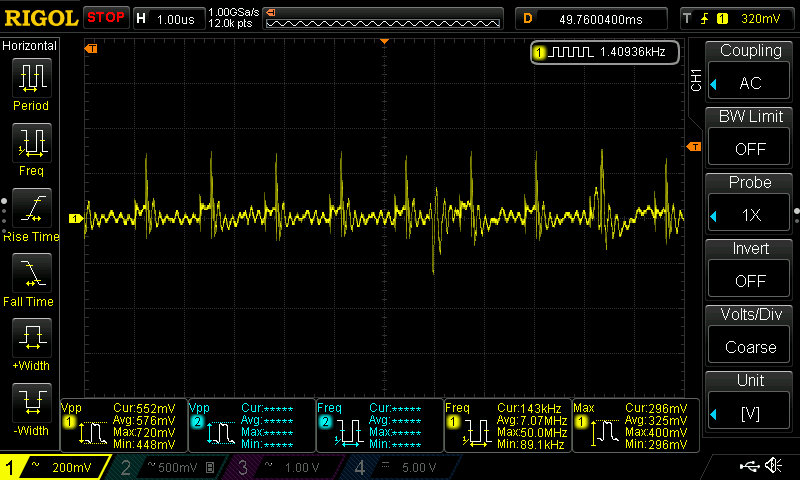
0.5A:
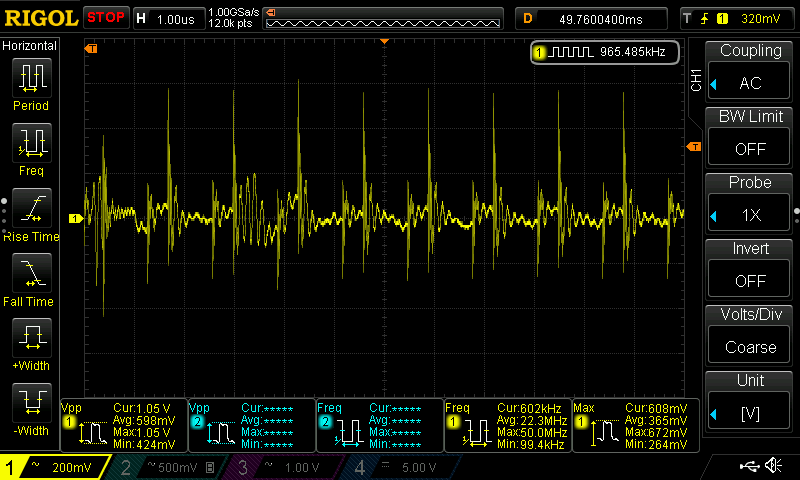
1A:
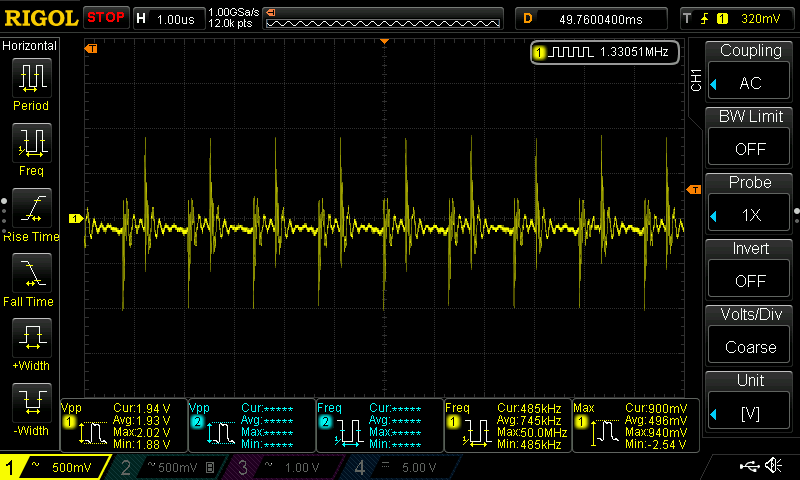
Here is the modified board (& probing setup):

The results here are mixed. At low current, the results are greatly improved. However, up at 1A there is still 2V of ripple on the output vs. the expected value of ~50mV.
This is likely due to the incorrect layout as pointed out by commenters.
Before I re-design the board to fix the errors, do these results point to additional problems with the design?

